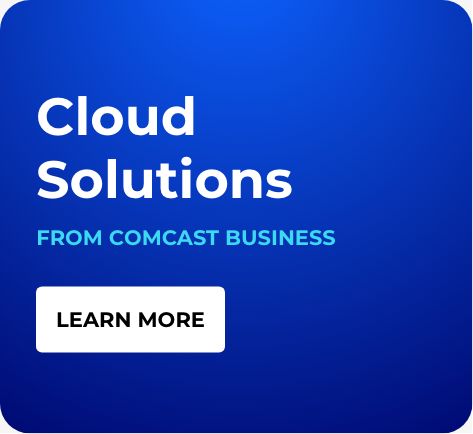Getting the Most from Your Marketing Technology: Dos and Don'ts

Marketing technology (referred to as martech in the jargon of the biz) is hot. But it can also be confusing and expensive. Just take a look at the martech snapshot put together by the Chiefmartec.com blog. Obviously, one article can't help you evaluate this crowded landscape to find the right marketing tools for your business, but you need a strategy to determine what you need and then get maximum value from the technology that you do implement. Here are some dos and don’ts to help you navigate the process.
DO understand what you’re trying to accomplish.
There are lots of different types of tools out there designed to help marketers better reach their target audience and convert them to paying customers. No one solution will do it all, and any given product will excel in a particular area. Building your martech stack should start with your goals and needs. Use those requirements to determine what types of technology you need, and then to evaluate the options within that space. This will also help you prioritize so you can implement your must-haves right now and plan for additional investments down the line to evolve your stack intelligently.
DON’T deploy tools in isolation.
Each tool is an enabler of some part of your overall marketing strategy and processes. You need to understand where one tool ends and another one—or a manual process—begins. Those handoff points, if not properly orchestrated, could create problem areas that lower the efficacy of your programs and affect your results. Understand the context in which each solution will run so you can create an ecosystem that works together. The same goes for the data that each system collects and uses. Consider how the data from one solution could be used across the board and plan for consolidating and using that data more broadly.
DO audit your processes.
Before you select and implement any new technology, it’s important to understand the landscape in which those tools will be deployed. Document your current state. Identify challenge areas—these are ideal candidates for exploring a technology solution. Determine what works well that you’d like to scale. Understand what will be automated (existing processes to be performed without human intervention) and what will be transformed (changed or new processes that aren’t possible without the technology).
DON’T automate what you don’t understand.
One big benefit of technology is its ability to automate so you can scale operations and programs. But it’s just as easy to scale ineffective processes as effective ones, and you don’t want to be blindsided by unintended consequences. Before you place any operation in the “black box” of automation, have a firm grasp of that process—what it entails, inputs and outputs, dependencies, desired outcomes, etc.—and exactly how it will be automated.
DO use your budget creatively and wisely.
Your goals and requirements should dictate where to focus your investments. If your budget is tight, perform value-based evaluations of your options. In other words, don’t look at any one tool based on the price tag of the various features that are available; consider instead the cost of the capabilities that you need. From there, allocate any remaining budget based on your priorities. Look for free, inexpensive, or freemium tools to supplement your martech stack with specific functionality that delivers additional benefits.
DON’T use features just for the sake of using features.
Whatever martech solutions you implement, it’s likely that many of them are chock-full of functionality. It’s easy to get seduced by so many shiny new toys, but just because you have them, it doesn’t mean you have to use them. Use your goals and priorities to evaluate whether a particular capability will address them—or whether it will simply be a distraction. Keep in mind there may be feature overlap across your martech stack, so determine where the best fit is for your needs. As your requirements evolve, you can always revisit any capabilities you previously opted not to use.
DO integrate with sales systems and processes.
Improving marketing/sales alignment is a big focus—and challenge—for many organizations. So, just as you shouldn’t implement individual tools in isolation, you also shouldn’t deploy marketing technology as a silo separate from sales. The more you can integrate tools, processes and data, the better and more effective the two teams can be.
DON’T over-templatize.
One benefit of many martech solutions is the “democratization” of technical production; what used to require hard-core coding can now be created by the average marketer. Often, this is accomplished through templates. The structure is pre-programmed and you simply need to drop in a headline here, an image there, and you’re ready to go. This ease of use is means you can get campaigns and communications out the door very quickly. But there’s a tradeoff—the more rigid the template, the less flexibility you have. Your content and format choices should be dictated not by the template, but by what will be most effective for the situation at hand. The loss of flexibility also limits your ability to test variations and different configurations to maximize results. There are two ways around this challenge: you can create a large library of templates to capture a wider range of scenarios, or you can minimize the locked-down structure of a template to allow for more “free form” implementation.
DO learn your systems like a pro.
The more adept you are at using your tools, the more you’ll get out of them. Take advantage of any training options available to you. And whenever you find yourself thinking, “I wish there was a way (or an easier way) to do X,” do a search. It’s easier to learn tips and tricks in the moment of need. And over time, all that additional knowledge will add up—and before you know it, you’ll be a power user.
DON’T neglect what the data tells you.
Take advantage of the data you have across your martech stack. You should track key metrics on a regular basis. But reporting shouldn’t just be an exercise in looking back—each reporting cycle should give you insight about what is or is not working. You need to use that information and adjust accordingly.
DO test.
Another benefit of technology is that it allows you to test. Experiment big with creative new approaches and small with incremental tweaks. Adopting a let’s-test-it mindset will help you refine campaigns, programs, content, and processes on an ongoing basis.
DON’T fall behind.
Your market and target audience will evolve. Your business will evolve. And your tools will evolve. Stay informed about new versions and the associated new capabilities and fixes. Keep abreast of best practices and adjust your approaches accordingly so you are always getting most from your technology investment.
Technology is great, but it’s still just a tool.
Marketers today have powerful technology at their disposal. Martech enables teams to automate complex processes, hyper-target key audiences, manage volumes of content, analyze vast quantities of data, continuously optimize programs and experiences, manage programmatic buys, identify and engage with influencers, and much more. But getting from the hype to concrete results takes smart evaluation, careful planning, thoughtful implementation, and ongoing care and attention.
In order to build a strong martech strategy you need to determine the best way to get maximum value from the technology that you do implement.
Locked Content
Click on the button below to get access
Unlock NowOr sign in to access all content on Comcast Business Community
Resource Center
Learn how Comcast Business can help
keep you ready for what's next.











